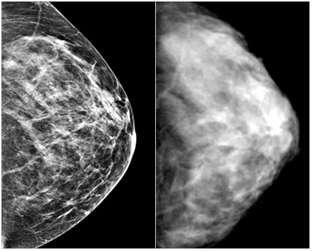More controversy has emerged surrounding mammograms ever since a new report in JAMA recommended that the test be performed based on a woman’s risk and preferences. Dr. Lydia Pace and Dr. Nancy Keating both of Brigham and Women’s Hospital in Boston, conducted a systematic review of data spanning 50 years. They examined about 450 studies from 1960 through the present to look for evidence on the benefits and harms of the diagnostic test.
According to their report, annual mammograms lower mortality from breast cancer by about 19 percent, though the benefits vary based on a woman’s risk and age. Approximately 1,904 women in their 40s would have to undergo a mammogram to prevent one death, while the same would be true for 377 women in their 60s. The disease is more common as a woman ages. At 40, the risk for breast cancer in the next 10 years is 1.5 percent, but that rises to 2.3 percent by age 50, and 3.5 percent by age 60.

The U.S. Preventive Services Task Force (USPSTF) changed its recommendations in 2009 to recommend women have mammograms starting at the age of 50 every two years, instead of having one every year or two beginning at age 40.
The authors of the report say the benefits of the test are overestimated, while the harms are underestimated. The harms include overdiagnosis and false-positives.
Overdiagnosis refers to detecting cancers that would otherwise not have become clinically evident during a woman’s lifetime. In that case, the tumor never grew or the woman died from another cause. The report says about 19 percent of women are overdiagnosed.
False positives are found in about half or more of women who have a mammogram each year for a decade. About 20 percent of these women will need a biopsy. Anywhere from 7 percent to 9.8 percent of women who have mammograms for a decade undergo unnecessary biopsies.
Weighing benefits and harms of mammography
“While we need more research on mammography’s benefits and harms today, existing data suggest that we have been overestimating the benefits of mammography and underestimating the harms over the years,” said Pace.
Keating said it is vital to look at a patient’s profile, because some women don’t have a longer life expectancy.
“I have 80-year-olds in my practice with life expectancies of 15 or 20 years, and 60-year-olds who will likely only live another year or two,” she said. “Those two kinds of patients need different recommendations about whether to continue screenings, and it can’t be based simply on the patient’s age.”
Don’t screen based on risk alone, groups say
Though the American College of Radiology (ACR) and Society of Breast Imaging (SBI) agree with the report, they say that ordering mammograms based primarily on risk would fail to detect-and potentially treat-breast cancers.
They cite a report published in the American Journal of Roentgenology, which says the USPSTF’s screening guidelines would cause the death of approximately 6,500 women a year in the U.S. The report says that thousands more would have to undergo treatments under that guideline than if their cancers were detected early via mammogram.
The ACR and SBI issued a statement reiterating their belief that the authors put too much emphasis on the obsolete and low-lifesaving benefits of mammography that are in old studies. They cited a Canadian National Breast Screening Study that has already been condemned numerous times and should not be in their analysis. (The World Health Organization excluded the CNBSS from its assessments on how mammography impacts breast cancer deaths.) The groups reference a recent article in The Oncologist that says many studies in Pace and Keating’s article discussing overdiagnosis and potential harms of mammography are not as well-founded.
Are mammograms really harmful?
A recent study published in Cancer showed that more than 70 percent of women in their 40s who died from breast cancer were among the 20 percent of women who were not being screened.
According to National Cancer Institute data, the breast cancer death rate in the U.S. dropped 30 percent since mammography became popular in the mid-1980s.
Dr. Carol H. Lee, chairperson of the American College of Radiology Breast Imaging Communications Committee, said that the ACR and SBI are sticking to their recommendation that women at an average risk for breast cancer should begin getting an annual mammogram at 40.
“We do not recommend that mammograms be performed less often for any age group or risk level,” Lee said. “It is important to understand that the majority of breast cancers occur in women with no identifiable risk factors. Therefore, if the decision to screen is based on the level of risk, most breast cancers will go undetected until they are bigger or palpable.”
Lee said that Pace and Keating show that mammography has led to a decrease in breast cancer deaths.
“This crucial fact has been overshadowed by the inappropriate emphasis on the downsides of mammography, namely false positives and possible overdiagnosis,” Lee explained. The inconvenience of a recall for a so-called false positive is preferred over not screening at all, Lee added. Not going back after a test to confirm a diagnosis would neglect the chance to detect breast cancer at an “early, treatable stage.”
“We need to recognize that although not perfect, mammography does indeed save lives,” Lee said.
April 08, 2014
By Kristen Fischer